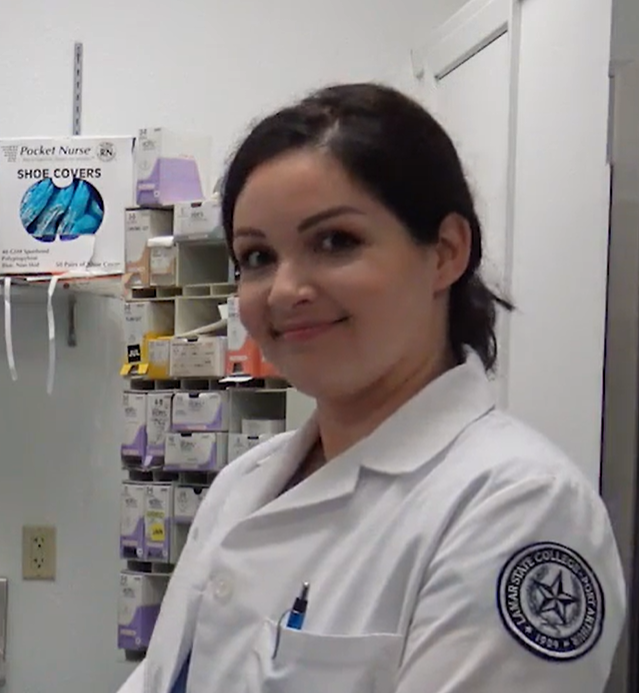Opening Sterile Surgical Instrument Containers
Transcription
Surgical instruments are often contained within rigid instrument containers. The containers are reusable and keep down on the amount of trash in the OR coming from wrappers.
The set that we have here is a laparoscopic set from one of our clinical partners, Baptist Hospitals of Southeast Texas. The set is for laparoscopic surgery. It comes in a metal reusable container, and if we look at the outside, we see several big pieces of information. Number 1: you'll see the fluorescent orange lock with a chemical indicator on it. Before we would ever open up this instrument set, we would want to verify its integrity. Make sure the seals are good, make sure they haven't been popped, make sure that the indicator has turned from white to black. Also, there is a little "price tag" sticker that is going to tell us the autoclave, the load number, and the Julian date, which is the days of the year from 1-365.
There are locks on both sides of the container, and before I open them, I want to put a hand on either side. As I open them, the lock is going to break, and a little piece of plastic may fly off, so you may want to keep your hand over it. We're going to pop them at the same time, simply by lifting up right here with our fingers. This instrument set is going to come up 12 inches, and we're going to rock back. We do that to get off of the top of the set because we don't want to hang over a surgical set because of fallout contamination.
Once we do have the set, there are chemical indicators on these filters. We want to take off the cover to the filter, and we often hold it up and we hold it up to the light. What we're looking for are holes, tears, watermarks - something that could show that this filter had a break in it. Since there's two, we'll do one on each side.
The unsterile person is the one who is going to open the outside of this set. What we're waiting on, after we open up the lid, is we need the sterile surgical tech who's already done a surgical hand scrub, or used Avagard to don sterile gown and gloves, and then they are going to come up and before they put their hands inside that set, they want to look for the chemical indicator that's in there and make sure that it's already turned.
The surgical tech student will approach the sterile instrument container, making sure to leave room between their sterile gown and the outside of the container. Before they reach their hands in, they check the internal indicator to make sure that the color changed and went from white to blue or black. Once that's been determined, she will reach inside the set, and pick up the entire set, and wait for the circulator to come up and check the filters in the bottom of the set. To do so beforehand would contaminate the entire back table if the filters were shown to be bad. It's good. The surgical tech waits for the circulator to tell them it's good before they put the package on the table.


